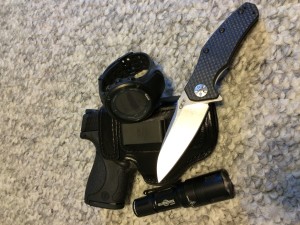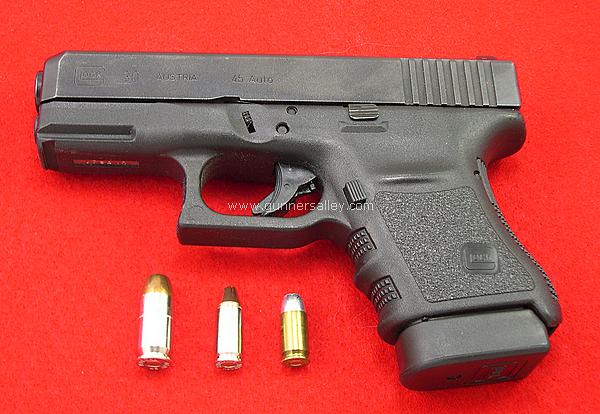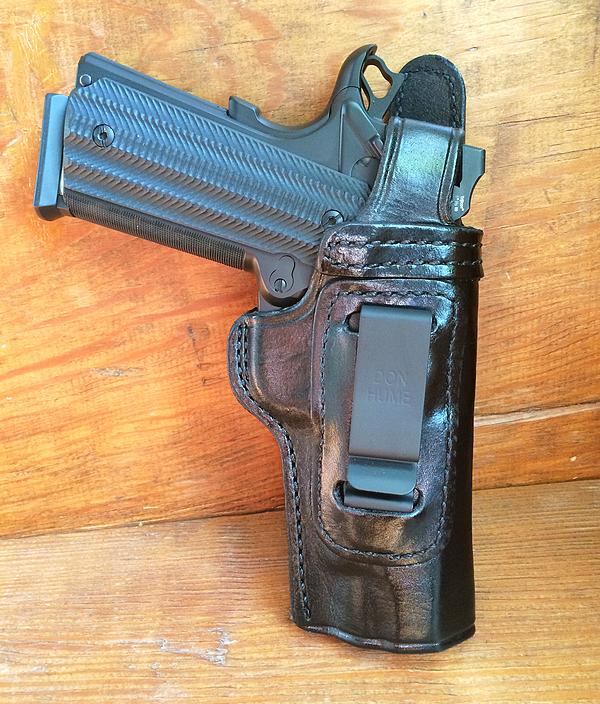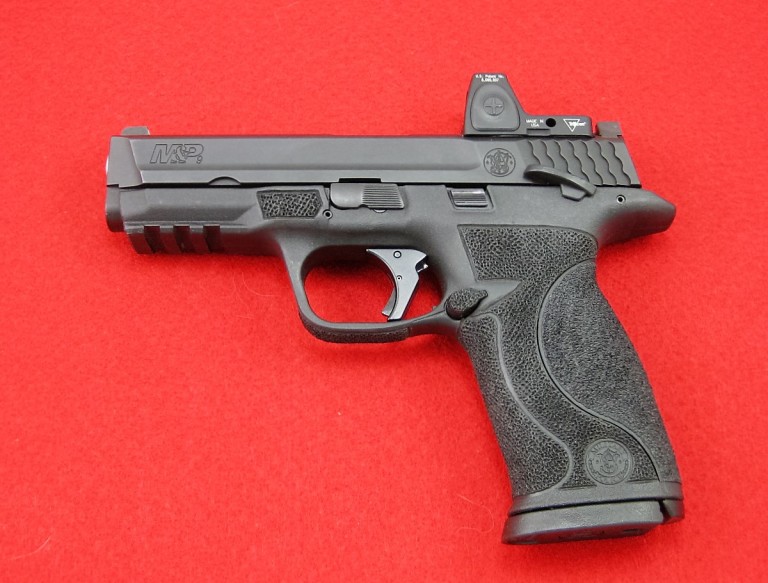Blog Archive
-
▼
2016
(8)
-
▼
March
(6)
- Delivering the ShotI recently changed my daily car...
- The Great Caliber Debate Takes Another Twist
- Thumb Break Holsters and Single Action Autos We an...
- My Red Dot Sighted Pistol Experiment – Part I
- So you've decided to get your CCW or CHP in your s...
- CCW Weekend: Is National Concealed Carry Reciproci...
-
▼
March
(6)
Delivering the Shot
I recently changed my daily carry gun
I ran some rounds through my G19 to test the new Trijicon HD’s I installed, then I tested the new mags I picked up for my Sig P238, M&P Shield and M&P Compact. Lastly I tested a .40 cal to 9mm conversion I did for a friend on their Glock G22.After all the function tests were successful, I decided to shoot the guns at 7, 15, and 50 yards at a ¼ scale steel silhouette target. I decided to use a timer for a par time, but mostly I was listening for hits within the par time. I varied the times from 3 seconds to 9 seconds depending on the distance for each 5 to 10 shot string. I was drawing from appendix position with each pistol since that is how I have been carrying lately.The results were interesting, and maybe I will post them in another entry, but I realized that hitting a ¼ scale target at 50 yards with a pocket size .380 is a challenge. I could do it, but not fast enough for my liking. The Shield made it a little easier, but I still wasn’t completely satisfied with the results. The M&P compact, my G19, and the converted G22 produced much better results for me. I could regularly hit 9 of 10 shots on the steel at 50 yards with those guns. The shorter distances were not a problem with these guns either…or the Shield for that matter.
Read the rest of the story here: http://blog.gunnersalley.com/delivering-the-shot/

The Great Caliber Debate Takes Another Twist

Thumb Break Holsters and Single Action Autos
We answer many questions about holsters during the course of any given day
One item that comes up on a very regular basis these days is the way to carry a single action auto in a thumb break style holster. Due to the popularity of great CCW guns like the Sig P938, Sig P238, and compact 1911’s, we are seeing an increase in the number of people that want to carry these guns in a thumb break equipped holster.
We point out to people that holster manufacturers design their thumb breaks to be engaged when the gun is in Condition One, or “cocked and locked” as it is often called. This means that the hammer is back, the safety is on, and there is round in the chamber. (The thumb break will go between the slide and cocked hammer of the pistol.) This often surprises people, especially if they are new to firearms, CCW, or to single action auto pistols. They are usually expecting to carry the gun hammer down on an empty chamber (Condition Three), and have the thumb break go over a hammer that is resting against the slide.
Read the rest of this article here: http://blog.gunnersalley.com/thumb-break-holsters-and-single-action-autos/

My Red Dot Sighted Pistol Experiment – Part I

So you've decided to get your CCW or CHP in your state for protection? You selected a handgun, went through training, and are prepared for the worst.Well, the worst just happened and you had to use deadly force to protect your family
We all hear horror stories about the legal nightmares that occur after a deadly CCW or self defense incident. Just recently I came across a story about a gentleman who was staying at his parents house once night, and he was forced to shoot an intruder that forcibly entered the home. The intruder survived and sued the gentleman for a ridiculous sum of money. The case was eventually thrown out of court, but not before the man had racked up an $85,000 legal bill to defend himself against the suit. You can read the entire story here: http://sonsoflibertymedia.com/intruder-shot-now-homeowner-struggles-85000-legal-bills-intruder-sues/.
Stories like these abound over the internet, so the question really becomes "are you financially prepared for such an incident"? The answer to that question gives us an opportunity to look further into specialized insurance, commonly called self defense insurance, CCW insurance, or concealed carry insurance. As the CCW movement has spread across the US, a number of insurance providers are now offering specialized plans to cover CCW holders.For starters, it's important to understand that the effectiveness of this type of insurance varies from state to state, so it's important to understand how your own state interprets this type of insurance and coverage that comes along with it. Many states have a "stand your ground" provision and that provision may (or may not) protect you against any potential civil actions. It's certainly suggested that you speak with a versed CCW attorney in your home state to ensure that you are clear on the laws that apply to your individual situation.
Read the rest here: http://blog.gunnersalley.com/do-i-need-ccw-or-self-defense-insurance/
CCW Weekend: Is National Concealed Carry Reciprocity Viable?
About Me
- Concealed Carry Holsters